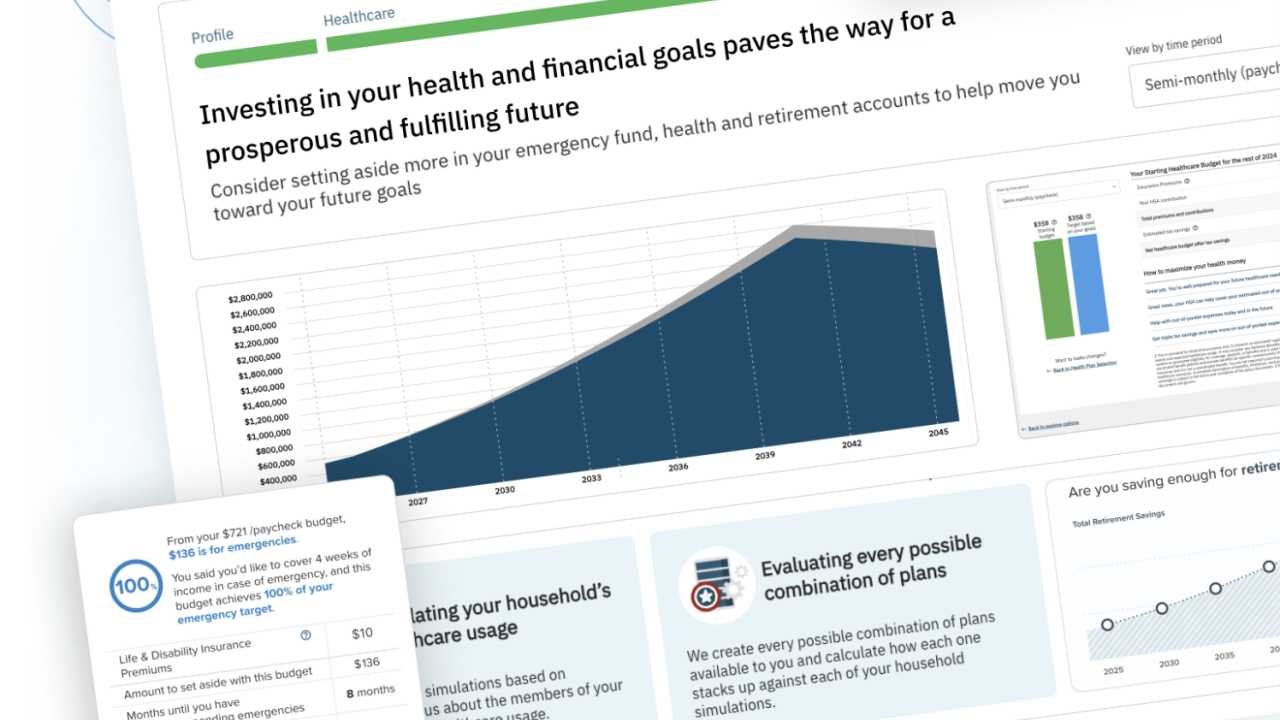Financial stress can not only cause a host of problems for employees — but it can also have extremely negative effects on employers, new research confirms.
An inability to manage day-to-day expenses can cause a great deal of stress, which then carries over to the workplace, according to a new report from Financial Finesse. The study found that 6 out of 10 people lost sleep over at least one financial problem, which leads to an average of 11 lost days of productivity on the job, says Cynthia Meyer, a certified financial planner with Financial Finesse.
Plus, if people are stressed out, and not getting enough sleep, they may turn to substance abuse, smoking or eating too much. All of these behaviors have negative consequences on their employer, including higher health care costs and lower productivity, she says.

Employees who have manageable financial stress include those who have a handle on their cash flow, have an emergency fund and pay their bills on time. Those with unmanageable financial stress usually live “paycheck to paycheck, with expenses exceeding their incomes and/or with large debt balances and no emergency savings,” the report says.
“People with high levels of stress are more likely to suffer heart attacks and are more likely to have digestive problems and hypertension,” Meyer says. “Forty-four percent suffered from migraines. It’s almost like financial stress syndrome.”
It is this unmanageable financial stress that is driving up employer healthcare costs. There’s also research that indicates that overwhelming financial stress is driving up workplace accidents.
Liz Davidson, CEO and founder of Financial Finesse, says that the only way to get employees to take charge of their unmanageable financial stress is to help them get a handle on what they are doing with their wallets everyday.
Financial Finesse offers its C.A.L.M. Financial Stress Reduction Model as a standard in its financial wellness efforts to help employees get a handle on their cash management.
“The idea is that before you can even talk about it, first you have to stop the bleeding. Reversing the effects of financial stress begins with doing a couple of simple things,” Meyer says. First, employees should speak to someone who can help them get a handle on your finances. That could be a certified financial planner, a credit or financial counselor.
“Just having that outside, more objective and unbiased voice that is working with folks to make the day-to-day small changes” can have a major impact on their financial stress, she says.
The first step in C.A.L.M. is to create a plan to manage cash flow. That could be as simple as writing down everything being spent or tracking expenses.
The second step is to automate everything. Individuals who have unmanageable financial stress do a poor job of paying their bills and saving money for emergencies. By automating bill pay, employees won’t have to worry about missing payments again, and by having money automatically taken out of their paychecks, they can save for emergencies without having to think too hard about it.
Step three is to lower spending.
“What we say to folks on the help line is look for one small thing you spend money on that is not important to you,” Meyer said. Instead of buying lunch, soda, cigarettes, magazines or fancy coffee every day, individuals could take that money and use it to reduce their debt or build up an emergency fund, she said. Some individuals may need to reevaluate their housing or transportation costs.
“That is where a coach is helpful to encourage what needs to be tweaked,” Meyer says. “For some folks it could be they can’t lower their spending any more but they can look for a side gig.”
Step four is for making progress one step at a time. If employees start making small cuts in spending now, eventually it will become a habit. When it becomes a habit, that’s when individuals will see exponential progress, she says.
The C.A.L.M. Model is particularly helpful for women in the workforce, says Davidson, as they are at heightened risk of unmanageable financial stress compared to men. At highest risk are women under the age of 30 who have minor children at home and make under $60,000 a year — with a whopping 54% reporting high or overwhelming financial stress.
Thirty-nine percent of all women making less than $60,000 a year have unmanageable financial stress, according to the report, as do one-third of people with minor children at all income levels.
Women are more likely to report financial stress than men. That’s why financial wellness programs are so important, Meyer says. Employers who offer financial wellness programs and financial coaching for their employees will see a larger impact to their bottom line.
The savings come from a reduction in healthcare costs. In its last return on investment study of Fortune 100 employers, there was a more than 23% reduction in healthcare costs after companies implemented and tracked a financial wellness program for more than a year, Meyer says.
When employees have a better handle on their day-to-day expenses, they also take fewer loans from their 401(k) plans and are less likely to have their wages garnished to pay off debts.





